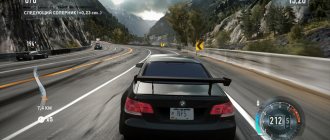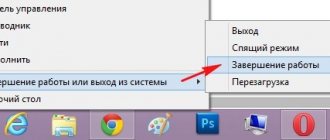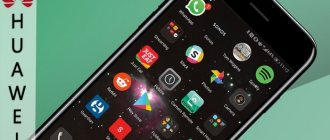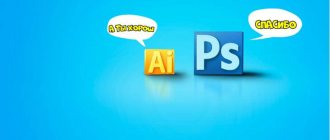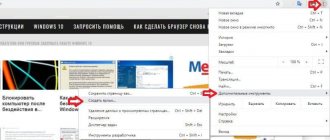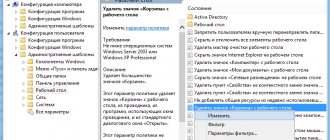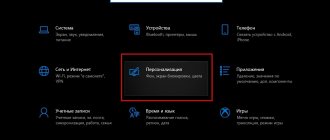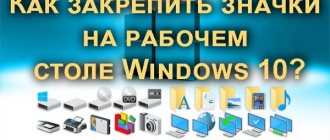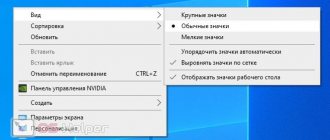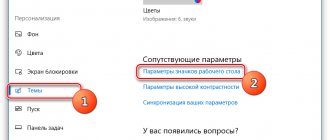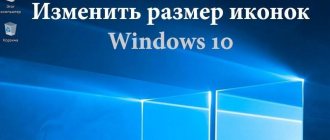Helping pensioners learn computers and the Internet, free computer courses for pensioners, free lessons on learning computers and the Internet for pensioners, programs for working on a computer, everything for a pensioner in one place, useful information for pensioners, self-study for pensioners, pensions and benefits, hobbies and leisure of pensioners
How to display a shortcut on your computer desktop? This is one of the questions that interests novice computer users. Young people somehow quickly find a solution themselves. Older users need some help. Everything is solved easily and simply when you know what and how to do. Today I will show you how to display a shortcut on your computer desktop.
Of course, it is more convenient to use programs when their shortcuts are on the desktop. There is no need to perform unnecessary actions and search for the program through the START button. Therefore, we will display those programs, or rather their shortcuts, that we use more often on the desktop. The program itself will remain in its place. She won't move anywhere. But first, you still have to find the right program.
How to display a shortcut on the desktop. First way
Double-click on the “This PC” icon with the left mouse button. You may have this icon labeled “My Computer”. Or just "Computer". In the window that opens, click on drive C: This drive usually contains all our programs. Unless you created a separate folder for programs on drive D: Or on some other drive.
On my C: drive there are only system files. All other programs that I installed additionally are located on drive D: For them, I created a separate folder and called it Programmy. We are looking for a program whose shortcut we are going to display on the desktop. I will look for the program on drive D: in the Programs folder. You can search on your C drive:
Open the folder with programs. Right- click on the folder There is no need to open the program itself! For example, I chose the Paint.NET program. In the menu that appears, select the “Send” command and then “To desktop (create shortcut).”
The treasured “Start” button
Before you start searching, take a close look at your desktop. Many applications often automatically create their own shortcut on the desktop by default during the installation process. To start, just click on the corresponding icon.
You can also find the “loss” using the “Start” button.
If suddenly you don’t have the Start button, then this article tells you how to get it back.
Click on it, and in the drop-down window you will see a complete list of your applications. To launch an installed program or open a specific file or folder (help, installation, etc.), select the desired line and click on it.
How to display a shortcut on the desktop. Second way
There is another way to display a shortcut on the desktop. Let's right-click on the desktop. Select the “Create” command and then select “Shortcut”.
A window like this will appear in which you need to click on the “Browse” button. Another window will open. In it we go again to where we started in the first method. That is, you first need to click on “This computer”. And then search the disks for the desired program. Choose the method that seems more convenient to you.
OK it's all over Now. We figured out how to display a shortcut on the desktop. If anything remains unclear, ask questions in the comments to this article.
Other similar articles on this site
When you already have a good command of a computer, you forget that even creating a folder can cause difficulties for a novice user...
First, let's figure out what a screenshot is, and then we'll learn how to take screenshots. A screenshot is a snapshot of the entire screen on our computer or...
Quick start link
Through any browser, you can place a link to a website on the Windows home screen. The procedure does not take much time:
- Let's take Yandex.Browser as an example. Launch your browser. In one of the tabs, go to the YouTube page that you want to launch through the shortcut on the “Desktop”.
Open the desired hosting page in a new tab
Make your browser window smaller so you can see the "Desktop"
Highlight the link in the address bar
Click on the link and, without releasing it, move it to a free field of the table
The link appeared on the home screen
If you do not find the program you need in the Windows Main Menu
But sometimes you cannot find the desired program in the main menu (someone accidentally or deliberately deleted the shortcut). Don't despair, the matter can be fixed. If the program is on the computer, then you need to find the program launching file and display a shortcut from it on the desktop.
For the Word text editor, the path will be like this. Using Windows Explorer or the Total Commander file manager, find the Program Files folder, in it the Microsoft Office folder, then open the OFFICE11 folder and find the WINWORD.exe file in it
On the found file, right-click to open the context menu, and then act in the already proven way. Proceed the same way with any other program. Find its folder in Program Files, then find in the folder the file that launches the program (most often it has the extension .exe, but there are others). If you don’t immediately understand which file is launching, double-click it and try to launch it. If the program starts, then everything is correct, this is the main file. Display the shortcut from it on the desktop using the method shown above.
Note: You cannot delete anything in the Program Files folder using the Delete button. Otherwise, the program located in this folder will stop working!
ONLY FOR WINDOWS 10! Placing folders in the Quick Access Toolbar in Windows Explorer
The new Windows 10 operating system has another option to quickly open important and frequently used folders. Now this can be done using special bookmarks in Windows Explorer.
The area in Windows Explorer where you can add bookmarks is called the “Quick Access Toolbar” and is located on the left side of the window:
You can add any folder to this panel in order to open it quickly, without the need to climb and search throughout the computer. A pushpin icon appears next to pinned folders. If you have the Windows 10 operating system installed on your computer, then I think you will find this feature very useful. Also in the same panel will appear the folders that you opened last.
Pinning a folder to the Quick Access Toolbar is very easy! You need to find the folder on your computer that you want to pin to the Quick Access Toolbar, right-click on it and select “Pin to Quick Access Toolbar”:
After this, the selected folder will immediately appear in the Quick Access Toolbar in Windows Explorer:
Notice the pushpin icon next to pinned folders. Those folders in this panel that do not have this icon are not pinned, but are simply the last open folders that will constantly change.
How to rename a desktop icon
If you don't like the name assigned to the shortcut by Windows, for example, Shortcut for
Word, then you can change it.
To do this, hover the cursor over the shortcut (icon), right-click to open the context menu and select Rename
. Immediately the signature text under the label will be highlighted and you can remove the words “Shortcut for”, or completely rename the shortcut. After this, be sure to press the Enter key - only then will your name be saved.
Please note that such actions (rename, delete) can only be performed with shortcuts (they have a small black arrow in the lower left corner of the shortcut). Program files located in their own folders in Program Files cannot be renamed! Otherwise they will stop working. You can only display shortcuts from them, and do what you want with the shortcuts!
Types of shortcuts
If we consider the main types of Windows system shortcuts, we can distinguish three main groups:
- shortcuts that link to files (including executable ones) and folders have the extension .lnk;
- MS-DOS environment shortcuts are defined by the .pif extension;
- Shortcuts associated with Internet resources use the .url extension.
It may be impossible to determine the type of shortcut visually, since the extension is hidden by default in Windows. To display it, you will have to disable hiding extensions for registered file types.
How to display a website shortcut on your desktop
A site visitor asked me a question: “How to display a site shortcut on the desktop?” At first I thought that there was no point in this, because links can be placed in Favorites. But after testing this option, I became convinced that this method of opening a site has a right to exist. After clicking on the shortcut, the web browser launches and the site opens at the same time (two actions at the same time). How to create a shortcut on your desktop to your favorite site that you open every day? Since Internet Explorer is installed along with Windows on any computer, let's create a shortcut using it.
So, open Internet Explorer and open the desired site in it. Now in the File menu, move the cursor to the Send link, then to the right and click on the link Shortcut to desktop . That's it, the shortcut ( icon ) is already on the desktop. You can check!
To do this, go to the folder where the desired program is installed. There we find the file to launch it, right-click on it and select “Create shortcut”. It will appear in the same folder, after which all you have to do is drag it to your desktop. As an example, consider the Word text editor, which can be found in the Program Files - Microsoft Office folder. It will contain the file WINWORD.exe, which is used to launch. We create its shortcut and enjoy the result. Now you know how to display a program shortcut on your desktop. This can be done with Skype, mail, any folders and software.
Control Panel
There is also another way to get on the list. However, to use it, you will again need to click on the “Start” button. In the window that opens for you, you will find a section called “Control Panel”, click on this inscription and go into it.
Now you need the Programs and Features section. It will take you to a list containing a list of programs installed on your PC. The list will be in the form of a table in which absolutely all applications, their installation date, version, size, and publisher company will be indicated in strict alphabetical order.
Hover your mouse over the application and click on it, select the action to perform (you can restore, delete, change it). But before you uninstall, remember that a deleted program cannot be restored if you do not have the installation file.
In the same menu you can also view installed updates. To do this, select the “show updates” option. After this, you will see a list where you will be asked to familiarize yourself with all the updates. They can be removed or installed.
If you cannot find the Programs and Features section in Control Panel, in this situation you should use the search function (usually the search is at the top).
Enter a keyword or the full name of the section you are looking for in the appropriate field and go to the page with the results. Often, this process does not cause difficulties: what you are looking for should be at the very first place on the list.
Using the search function it is easy to find the program. It is advisable to know what drive it is on. As a rule, this is drive C. Specifying the desired drive will dramatically reduce the search time. It is not necessary to enter the full name of the program; enter only those words from the name that you are 100% sure of! If you make a mistake, you will definitely not find anything.
That's all, actually! If the described manipulations cause you some difficulties, and you still want to be on friendly terms with your computer, then take the “Computer Genius” course! This course is perfect for you if you:
- Do you want to have a profitable job that requires knowledge of office programs?
- Have basic computer skills but would like to improve your computer literacy.
- You are just starting to use a PC and don’t know anything about it and its capabilities.
In just a few months of training you can become a real computer genius!
Did you like the article, it’s informative?! Then share a link to it on social media. networks and don’t forget to subscribe to updates so as not to miss the edition of new equally interesting material. See you on the pages of my blog, bye!
Sincerely! Abdullin Ruslan
In the KhozOtdel.ru store you can order products for streets, parks, and courtyards.
Any user of the operating system, regardless of its origin, knows that icons (icons) corresponding to some programs or objects can be located on the workspace or in the quick launch panels. Each such icon is called a “Shortcut”. This, by the way, is not just an icon, but a means of quick access to performing certain actions in the form of launching programs, opening files or Internet pages. Next, let's look at the concept of shortcuts in a little more detail.
Shortcuts in other OS
Now briefly about shortcuts in other operating systems. On Linux, they are created in the KDE or GNOME environment using a text file and have a .desktop extension.
The functionality here is much higher, since you can not only change the name arbitrarily, but also add special comments (for example, about what the application being launched is intended for, when it is used, etc.).
On Mac, shortcuts are complete analogues of Windows objects, but if the user wishes, they can be created in any location, not just on the Desktop. By the way, it was Apple that pioneered the use of shortcuts for quick access to necessary objects.
Android also has shortcuts in the workspace, but it is impossible to change or delete them without uninstalling the main application without special tools.
For example, let's display a Word shortcut on the desktop.
Press the Start button 1. Then move the cursor (without clicking the mouse buttons) over the All Programs 2 menu. A list of programs installed on your computer opens. Follow the arrow to go to this list and hover over the folder you need - Microsoft Office 3.
A list of programs included in Microsoft Office will open. Move the cursor to the program we need: Microsoft Office Word 2003 4
Now, hovering the cursor over Microsoft Office Word 2003, press the right mouse button.
A context menu will open in front of you.
Releasing the right mouse button, move the cursor to the Send 5 item, a submenu will open on the right, in which you select Desktop ( create shortcut
) 6 and press the left mouse button.
That's it, now you can admire the program shortcut that has appeared on your desktop and launch Microsoft Office Word using it.
Object references
As is already clear, a shortcut is a means of quick access to a specific object, wherever it is located on your hard drive or on the Internet.
As already mentioned, communication is carried out through a link to the location of the object being opened. You can check it through the RMB menu on the shortcut and selecting the properties line. In the window on the tab that appears, you can see what type of object the shortcut is associated with, the full path to a file or Internet resource using a special button, find out the location of the file on your hard drive, if necessary, install a quick launch immediately as an administrator, etc.
As a rule, in Windows, shortcuts are created through the RMB menu on a file and sent to the “Desktop”. After this, the shortcut can be dragged, for example, into the panel for quick launch. But here's what's interesting. allows you to add user programs to the system startup. To do this, the shortcut from the “Desktop” is simply copied to the corresponding system folder. Sometimes such actions are the simplest solution when it is impossible to automatically start the desired application along with the operating system using conventional means.
For Internet pages, you don't have to copy the address. Simply select it and, with the left mouse button pressed, drag it to the desired location. But the browser window will have to be smaller.
Unfortunately, many inexperienced users make serious mistakes quite often. It is not uncommon for them to copy only shortcuts without the main objects to removable media. For example, the Desktop has a shortcut to a movie that is stored in user documents. The user copies, as it seems to him, the entire movie directly from the “Desktop” and is glad that it takes up so little space, forgetting that it is just a link to the main file. Naturally, then nothing opens on another computer, since the linked file is missing.
The same can be said about deleting objects. If the same program file is not on the hard drive, the shortcut will not work. Usually its icon even changes to a regular white square.
What is a shortcut?
So, a shortcut is an icon that serves as a pointer to an application or game, with which you can launch it by double-clicking the left mouse button.
Without a shortcut pointing to an application, you won't be able to launch it. If you want, you can move the icons to any place convenient for you, but by default they are always created on , this is done so that you can easily launch the desired program just by double-clicking on it with the left mouse button. I also want you to know that a shortcut differs from a file in that it has an arrow in the lower left corner. If you want to get rid of it, then follow the link leading to the post, which describes in detail the procedure for removing the arrows.
